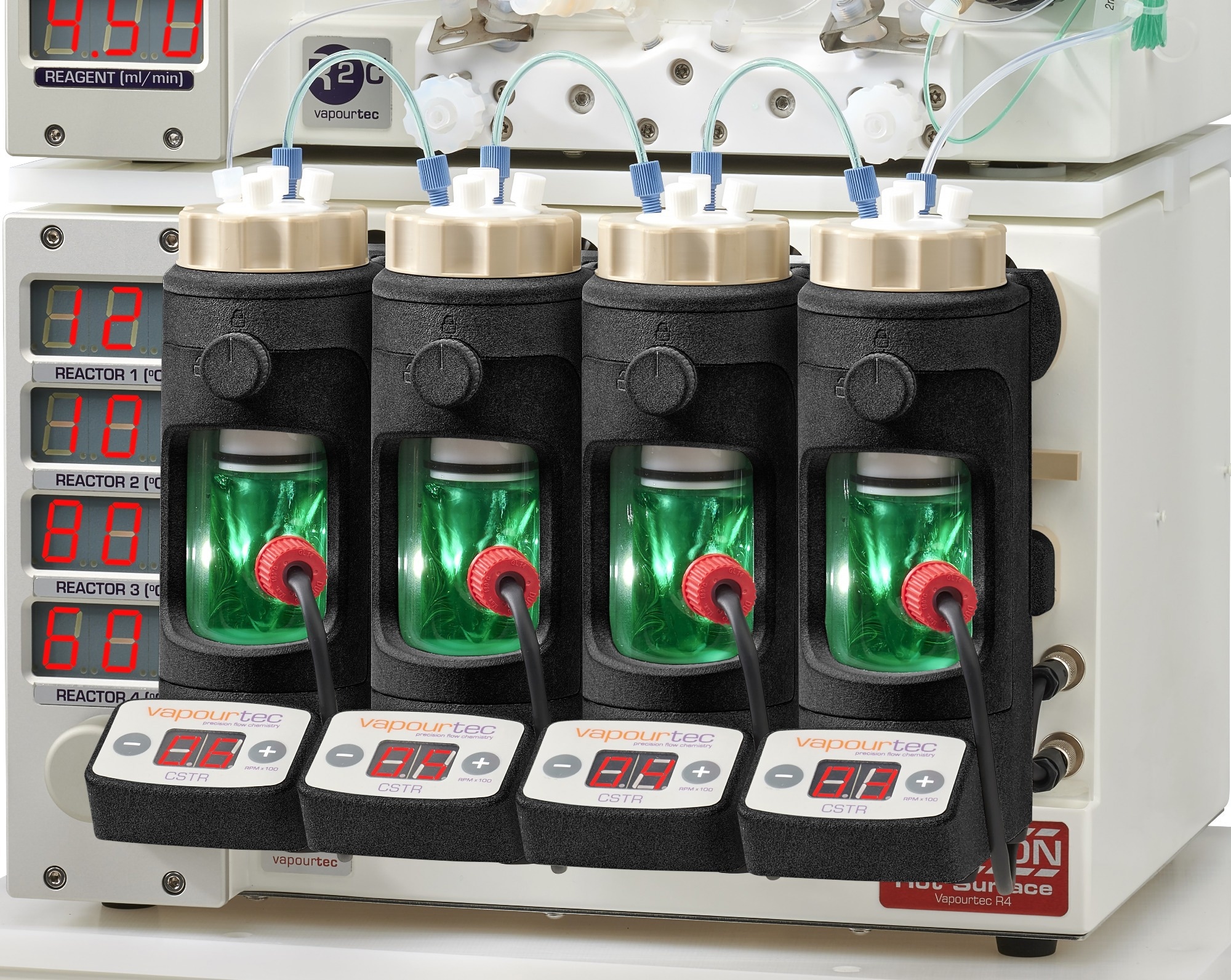Vapourtec has recently launched a continuous stirred tank reactor (CSTR) that is designed for continuous process synthesis and works in conjunction with their existing, industry-leading flow chemistry systems.

Image Credit: Vapourtec
Allowing for a cascade of up to eight reactors within an R-Series flow chemistry system that includes two R4 modules, Vapourtec’s CSTR is perfect for flow reactions involving solids and liquids. It operates at a pressure up to 5.0 bar with volume ranging from 5 ml to 40 ml per CSTR and can heat and cool the reactor in the range -10°C to +150°C.
Vapourtec’s entry level E-Series flow chemistry system can be fitted with up to two CSTRs.
The easy to clean and assemble system delivers safety and precision with stirring speeds from 100rpm to 1200rpm and features a built-in burst disc as well as an optional protective screen.
There is also the option for a photochemical CSTR using LED light sources from 365nm to 700nm.
The CSTR has been designed and developed in close liaison with leading flow chemists within industry and academia.
Dr. Manuel Nuño of Vapourtec explained: “CSTRs are commonly used within chemical synthesis however our approach has been to adapt that to flow chemistry and ensure it complements our two continuous process systems.
“A single CSTR can prove to be unsuitable as the residence time distribution (RTDs) exhibits significant variability. With uncontrolled back mixing, reaction products are free to mix with high concentrations of starting materials.
“With an eight reactor cascade it is possible to approach the performance of tubular reactors allowing for the separation of reaction products from starting materials and offering tightly controlled residence time distributions (RTDs).
“The stirring speeds and temperatures can also be set up in a fully bespoke way for each individual CSTR which helps to deliver greater control and accuracy across the entire system leading to more precise outcomes,” added Dr. Nuño.
Founded in 2003 and based near Cambridge, UK, Vapourtec’s systems have contributed towards the development of exciting new synthetic routes for important therapeutics including breast cancer drug Tamoxifen, Artemisinin for the treatment of malaria and peptide drugs focused on the treatment of type 2 diabetes.